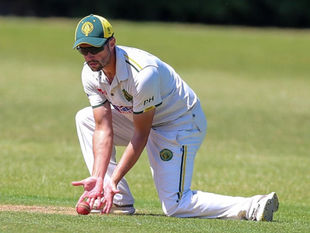
Fielding in the Ring: Anticipation, Angles and Movement
May 5
2 min read
2
106
0
In modern cricket, elite fielders don’t just react - they anticipate. The ability to expect and at times predict the batter’s next move allows a fielder to position themselves optimally and influence the game in subtle but decisive ways.
What Does It Mean to Anticipate?
Anticipation is a common term in the cricket world, often used to describe the difference between developing players and seasoned professionals. But what do the best actually do and what exactly are they anticipating?
Analysing the Batter
It only takes two to three balls to begin identifying a batter’s:
Movement preferences (back foot vs front foot)
Style of play (touch vs power)
Intentions at the crease
Armed with this insight, you can begin to assess which angles and positions will best suit the fielding situation.
Example:You're fielding at cover. An opening quick bowler is on and the batter is looking to play late, open the bat face and use touch to rotate strike. Based on that, you can now:
Shift your weight slightly towards the square side (left side)
Time your split step later
Anticipate a soft drop in front to attack
Fielding in the Middle Overs
Let’s consider another scenario - spin is on and you've moved to square leg. Here’s what you should be quickly assessing:
Is the bowler flighting, darting or varying pace?
Is the ball turning?
How has the batter played spin previously - with touch or power?
What's the game scenario - protect the single or stay on the circle edge?
What cues will you focus on - bat face, hands, ball or feet?
What are your personal strengths - quick movement left or right?
Once you’ve processed this information, you're in a position to predict and expect the batter’s next action. That extra half-step, a quick pivot of the hips or a sudden angled intercept can make all the difference. These milliseconds are where matches are often won or lost.
Mental Discipline: Staying Switched On
Staying mentally engaged for all 120 (T20) or 300 (OD) deliveries is a significant challenge. But elite fielders find ways to remain focused. Intense study of the batter’s patterns and subtle cues allows them to anticipate more effectively and influence the outcome.
Adaptability and Team Communication
Cricket is fluid. Scenarios change and new information is constantly being presented. Give yourself permission to adapt. Talk to your teammates - they might have spotted something you missed. Fielding is as much about communication and awareness as it is about technical execution and athleticism.






